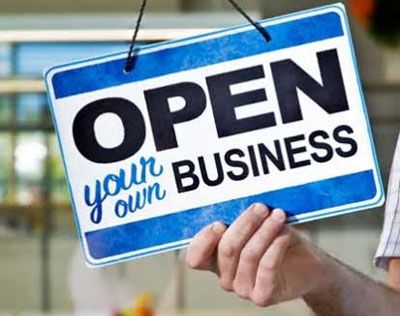
Call Us: (909) 885-7515
Starting A Business
 Starting a business can be an over whelming experience. There are so many questions, "Where do I start?", "Who do I talk to?", "Where can I get the funding?", etc. The following steps will give you the resources you need to start your business.
Starting a business can be an over whelming experience. There are so many questions, "Where do I start?", "Who do I talk to?", "Where can I get the funding?", etc. The following steps will give you the resources you need to start your business.
Step 1
Research and Plan Your Business
Use these tools and resources to help you prepare your business plan and become a successful business owner:
Step 2
Get Business Training and Expert Advice
Take advantage of free training and counseling services in your community. These services include everything from preparing a business plan, to getting financing, to help with expanding and relocating a business.
Call (951) 652-4390 and schedule a FREE appointment with a S.C.O.R.E. business counselor.
Step 3
Select a Location
The location of your business is a major factor in its success or failure. Get advice about choosing a customer-friendly location and complying with zoning laws or contact the business resources dept at the Chamber for advice on the zoning and location assistance.
Step 4
Finance Your Business
Unless you have a rich uncle, you probably will need some help to get started in business. Learn about government backed loans, venture capital and grants to help you get started.
Step 5
 Select a Business Name
Select a Business Name
Individuals or entities doing business for profit under a name different from the owner(s) full legal name(s) must file a Fictitious Name Statement with the County Recorder-Clerk's Office where the business will be conducted. Corporations, LLCs, LLPs, and limited partnerships register an assumed name as part of their required business filings with the California Secretary of State.
For help selecting a business name that will attract customers, visit our How to Name Your Business guide.
Step 6
Determine the Legal Structure of Your Business
If your business is a corporation, a non-profit, a limited liability company or a partnership (limited, or limited liability) you must register with the City of San Bernardino.
For help selecting a legal structure for your business, visit our Business Incorporation guide.
Step 7
Get an Employer Identification Number (EIN)
An EIN is also known as a federal tax identification number, and is used to identify a business entity. Employers with employees, business partnerships, and corporations and other types of organizations, must obtain an EIN from the U.S. Internal Revenue Service. The EIN is also known as an Employer Tax ID and Form SS-4:
U.S. Internal Revenue Service
Phone: 1-800-829-4933
Step 8
Register for State Taxes
Businesses that operate in California are required to register for one or more tax-specific identification numbers, licenses or permits, including income tax withholding, sales and use tax (seller's permit), and unemployment insurance tax. Contact the following agency for more information about business registration and your tax obligations:
Step 9
Obtain Business Licenses and Permits
In order to operate legally, most businesses require a business license or permit issued by the state and your local government. The following resources will help you determine your licensing requirements:
- Business Registration Department City of San Bernardino
- California Licensing Requirements
Info about business and occupational licenses required by the state. - Guide to Business Licenses and Permits
Tools and resources to help you determine your licensing requirements.
Step 10
Employer Responsibilities
If you are a new employer, our Ten Steps to Hiring Your First Employee will walk you through the legal steps you must take to hire your staff.
Additional resources:
- Guide To Starting Your Own Business (brochure, PDF)
- Business Registration Department City of San Bernardino,
- Inland Empire Small Business Development Center
Located at Cal State University San Bernardino, 5500 University Parkway, San Bernardino - San Bernardino Area Chamber of Commerce
546 W. 6th Street, San Bernardino, CA
Phone: (909) 885-7515 - U.S. Small Business Administration
Sources:
- Business.gov
- California Tax Service Center
- City of San Bernardino City Clerk's Office
- IRS
- San Bernardino Area Chamber of Commerce
- State of California Economic Development
SBA Launches Online Loan Matching Service
SBA has developed a new online tool called LINC, which stands for Leveraging Information and Networks to access Capital. LINC is an online loan matching service that helps connect potential borrowers with SBA lenders who can provide them with the capital to start and grow their businesses. For years, commercial lending clearinghouses have offered similar services, but unlike those organizations, SBA will be providing this service for free.
The tool is rolling out in waves, first to nonprofit community lenders that specialize in microlending, Community Advantage loans, and CDC/504 loans. In the longer term, SBA will look to add more traditional banks that offer a wider array of financial products.
LINC starts with an online form for borrowers, containing the information that matters most for lenders. The form, which contains twenty questions, takes approximately five minutes to fill out. Prospective borrowers may immediately go to https://www.sba.gov to check it out or apply.